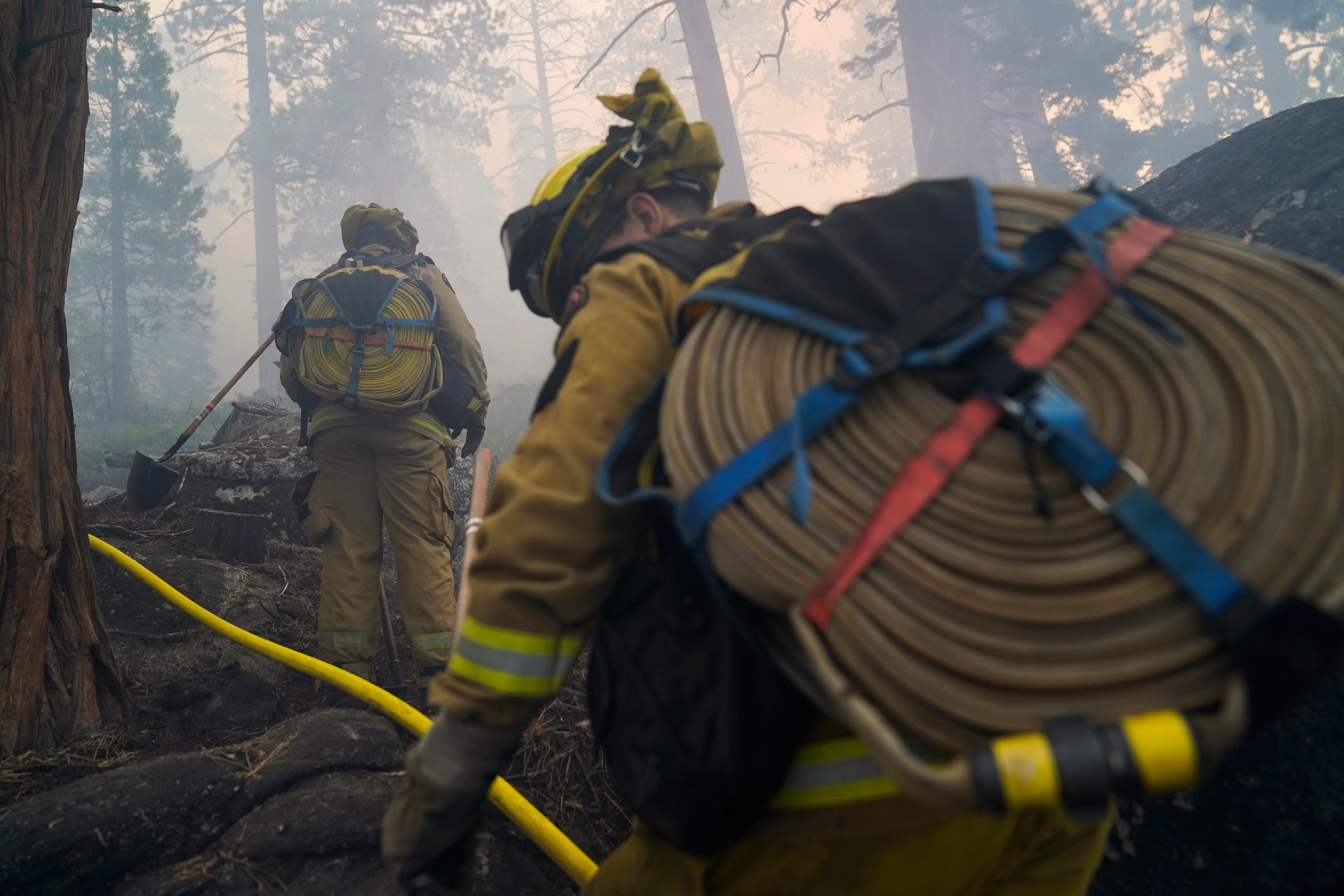Lake Tahoe evacuees watching weekend with hope as fire slows
Tens of thousands of South Lake Tahoe residents are watching hopefully this weekend for a chance to return home as firefighters make progress against a threatening California blaze

Your support helps us to tell the story
From reproductive rights to climate change to Big Tech, The Independent is on the ground when the story is developing. Whether it's investigating the financials of Elon Musk's pro-Trump PAC or producing our latest documentary, 'The A Word', which shines a light on the American women fighting for reproductive rights, we know how important it is to parse out the facts from the messaging.
At such a critical moment in US history, we need reporters on the ground. Your donation allows us to keep sending journalists to speak to both sides of the story.
The Independent is trusted by Americans across the entire political spectrum. And unlike many other quality news outlets, we choose not to lock Americans out of our reporting and analysis with paywalls. We believe quality journalism should be available to everyone, paid for by those who can afford it.
Your support makes all the difference.Tens of thousands of South Lake Tahoe residents are watching hopefully this weekend for a chance to return home as firefighters make progress against a threatening California blaze that has turned their thriving resort into a ghost town.
Lighter winds and higher humidity heading into the Labor Day weekend reduced the spread of flames and fire crews were quick to take advantage by doubling down on burning and cutting fire lines around the Caldor Fire.
Bulldozers with giant blades, crews armed with shovels and a fleet of aircraft dropping hundreds of thousands of gallons of water and fire retardant helped keep the fire's advance to a couple of thousand acres — a fraction of its explosive spread last month and the smallest increase in two weeks.
“Things are clearly heading in the right direction for us,” said Dean Gould, a supervisor with the U.S. Forest Service.
The northeast section of the immense Sierra Nevada blaze was still within a few miles of South Lake Tahoe and the Nevada state line but fire officials said it hadn't made any significant advances in several days and wasn't challenging containment lines in long sections of its perimeter.
A map displayed at a Friday evening briefing showed much of the 333-square-mile (862-square-kilometer) blaze ringed in black, to indicate containment lines.
With the fire about one-third surrounded, authorities allowed more people back into their homes on the western and northern sides of the fires Friday afternoon.
But there was no timeline for allowing the return of 22,000 South Lake Tahoe residents and others across the state line in Douglas County Nevada who were evacuated days ago. Authorities were taking that decision day by day.
“It’s all based on fire behavior," said Jake Cagle, a fire operations section chief. “For now, things are looking good ... we’re getting close.”
The resort area can easily accommodate 100,000 people on a busy weekend but was eerily empty just before the holiday weekend.
The wildfire dealt a major blow to an economy that heavily depends on tourism and was starting to rebound this summer from pandemic shutdowns.
“It’s a big hit for our local businesses and the workers who rely on a steady income to pay rent and put food on their table,” said Devin Middlebrook, mayor pro-tem of South Lake Tahoe.
He said the shutdown will also hurt the city, as it gets most of its revenue to pay for police and fire services, as well as road maintenance, from hotel taxes and sales taxes.
Fire crews still had a lot of work to do in the grasslands, timber stands and granite outcroppings. And despite the overall better weather, winds could still be “squirrely" and locally erratic as they hit the region's ridges and deep canyons.
The fire — which began Aug. 14, was named after the road where it started and raged through densely forested, craggy areas — was still considered a threat to more than 30,000 homes, businesses and other buildings ranging from cabins to ski resorts.
Wildfires this year have burned at least 1,500 homes and decimated several mountain hamlets. The Dixie Fire, burning about 65 miles (105 kilometers) north of the Caldor Fire, is the second-largest wildfire in state history at about 1,380 square miles (3,574 square kilometers) and is 55% contained.
California has experienced increasingly larger and deadlier wildfires in recent years as climate change has made the West much warmer and drier over the past 30 years. Scientists have said weather will continue to be more extreme and wildfires more frequent, destructive and unpredictable. No deaths have been reported so far this fire season.
___
Nguyen reported from San Francisco